Recent Posts
The Role of Moisture Meters in Assessing Fire Damage: Expert Insights from SERVPRO
12/18/2024 (Permalink)
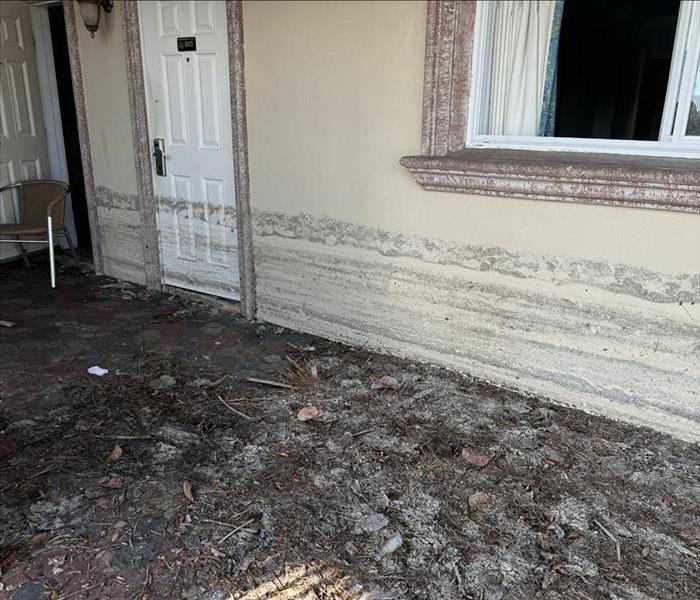 Explore how moisture meters help assess fire damage and ensure thorough, efficient restoration.
Explore how moisture meters help assess fire damage and ensure thorough, efficient restoration.
When fire damage strikes a home or business, it's not just the flames that cause destruction. Firefighting efforts, including the use of water to extinguish the blaze, can leave behind moisture in unexpected places. This combination of fire, smoke, and water damage presents unique challenges for restoration. One of the critical tools SERVPRO® uses in the fire damage restoration process is the moisture meter. In this blog, we’ll explore how moisture meters help assess fire damage and ensure thorough, efficient restoration.
Why Moisture Matters After a Fire
Fire damage is often accompanied by significant water damage due to firefighting efforts. Water can seep into walls, floors, ceilings, and insulation, causing hidden damage that may not be immediately visible. If left untreated, this moisture can lead to secondary issues like structural damage or mold growth. Accurately detecting and removing moisture is crucial to a successful fire restoration process.
According to the National Fire Protection Association (NFPA), fire departments responded to an estimated 353,100 home structure fires annually between 2015 and 2019, many of which involved water damage as part of the firefighting efforts. With so many fires resulting in water exposure, using moisture meters to assess the extent of water damage is essential to restoring properties fully.
How Moisture Meters Aid in Fire Damage Restoration
Moisture meters are specialized tools used by SERVPRO technicians to measure the moisture content in materials such as wood, drywall, concrete, and carpet. After a fire, using these devices allows professionals to identify hidden pockets of moisture that could lead to further damage if not addressed. Here’s how moisture meters contribute to the fire restoration process:
1. Accurate Moisture Detection
Moisture meters provide precise readings of the moisture levels in various materials. SERVPRO uses both pin and pinless moisture meters, depending on the surface being tested. Pin moisture meters use probes inserted into the material, while pinless meters measure moisture without penetrating the surface. These devices help detect moisture deep within walls, ceilings, and floors that may not be visible to the naked eye.
2. Preventing Secondary Damage
Hidden moisture can lead to secondary damage long after the fire is extinguished. Materials like wood and drywall can absorb water, leading to swelling, warping, or rotting over time. By identifying areas with elevated moisture levels, SERVPRO can take immediate steps to dry these materials before further damage occurs. This proactive approach helps save money on more extensive repairs down the line.
3. Guiding the Drying Process
Moisture meters are critical in guiding SERVPRO’s drying efforts. By measuring the moisture levels before, during, and after the drying process, technicians can ensure that the affected areas are completely dry before moving on to the next steps of fire restoration. This precision ensures that no moisture is left behind, reducing the risk of future complications.
4. Ensuring Structural Integrity
When moisture seeps into structural elements such as framing, beams, and flooring, it can weaken the overall integrity of the building. SERVPRO technicians use moisture meters to assess whether these materials have been compromised by water. If moisture readings indicate significant water damage, appropriate repairs can be made to reinforce the structure, ensuring the building’s safety and longevity.
5. Documentation and Insurance Support
Using moisture meters not only helps in the physical restoration process but also assists in documenting the extent of water damage for insurance claims. SERVPRO’s technicians record moisture readings before and after drying efforts to provide concrete evidence that moisture levels have been restored to safe levels. This documentation can streamline insurance claims and ensure that homeowners receive proper compensation for the damage.
Key Benefits of Using Moisture Meters in Fire Damage Restoration
- Precision: Moisture meters detect hidden moisture that might otherwise go unnoticed, allowing for targeted drying efforts.
- Prevention of Secondary Damage: Identifying and addressing moisture early prevents further damage, such as warping, swelling, or structural weakening.
- Efficient Drying: Moisture meters guide the drying process, ensuring thorough drying and minimizing the risk of mold or long-term damage.
- Enhanced Structural Safety: By detecting moisture in structural components, moisture meters help maintain the integrity of the building.
- Accurate Documentation: Moisture readings provide essential data for insurance claims, helping ensure fair compensation.
Conclusion: The Importance of Moisture Meters in Fire Damage Restoration
Moisture meters are an invaluable tool in assessing and restoring fire-damaged properties. SERVPRO’s expert use of moisture meters ensures that hidden water damage is quickly identified and effectively treated, preventing further complications and ensuring the long-term safety and integrity of the property. With the right tools and expertise, SERVPRO can restore your home or business to its pre-fire condition efficiently and effectively.
If your home has suffered fire damage, contact SERVPRO today for professional fire and water restoration services. Our experts will use industry-leading tools like moisture meters to ensure a thorough, complete recovery.
Mold vs. Mildew: What's the Difference? Expert Insights from SERVPRO®
11/13/2024 (Permalink)
 In this blog, we’ll dive into the key differences between mold and mildew and explore their causes.
In this blog, we’ll dive into the key differences between mold and mildew and explore their causes.
When it comes to maintaining a clean and safe home in St. Petersburg, FL, mold and mildew are two common concerns. Although these fungi share some similarities, they are quite different in appearance, growth patterns, and the level of damage they can cause. Understanding the difference between mold and mildew is crucial for proper identification and removal. In this blog, we’ll dive into the key differences between mold and mildew, explore their causes, and provide expert insights on how to prevent and remediate these unwelcome guests in your home.
What Are Mold and Mildew?
Both mold and mildew are types of fungi that thrive in moist, humid environments. They can grow on a variety of surfaces, including walls, ceilings, tiles, fabrics, and even wood. While they are similar in some respects, mold and mildew differ in appearance, severity, and how they affect your home. According to the Environmental Protection Agency (EPA), about 30-50% of homes in the U.S. have some form of mold growth due to moisture issues.
Key Differences Between Mold and Mildew
While both mold and mildew grow in damp environments, there are important distinctions between the two that homeowners should be aware of. Here are the key differences:
1. Appearance
- Mildew: Mildew typically appears as a flat, powdery, or fluffy growth on surfaces. It is usually white, gray, or yellow and can be easily wiped away when it first appears.
- Mold: Mold tends to have a fuzzy or slimy texture and can come in a variety of colors, including black, green, blue, or even brown. Mold often penetrates deeper into surfaces, making it more challenging to remove.
2. Growth Patterns
- Mildew: Mildew usually grows on the surface of damp areas and spreads out in small patches. It prefers less porous surfaces, such as bathroom tiles, windowsills, and fabrics.
- Mold: Mold is more invasive and can penetrate porous materials like drywall, wood, and insulation. It spreads more aggressively and can grow into colonies that cause significant damage to the structure of your home.
3. Odor
- Mildew: Mildew has a musty odor, but it’s generally less pungent than mold.
- Mold: Mold tends to have a stronger, more noticeable smell that can permeate the air in affected areas, signaling its presence even before it is visible.
4. Damage Potential
- Mildew: Mildew is easier to remove and generally doesn’t cause significant damage to the surface it grows on, especially if caught early.
- Mold: Mold can cause substantial damage if left unchecked, as it grows deeper into porous surfaces and weakens the material over time. Mold is much harder to eliminate and may require professional remediation.
Causes of Mold and Mildew
Both mold and mildew thrive in moist environments, making areas with high humidity or frequent water exposure particularly vulnerable. Here are some of the common causes of mold and mildew:
- Humidity: Mold and mildew both thrive in environments where humidity levels are above 60%. Bathrooms, kitchens, basements, and attics are common places for moisture buildup due to steam, condensation, or leaks.
- Water Leaks: Whether from a leaking roof, burst pipe, or faulty plumbing, water intrusion can lead to the growth of mold and mildew. Even minor leaks that go unnoticed can create the perfect environment for fungi to thrive.
- Poor Ventilation: Spaces with little or no ventilation, like basements or closed-off rooms, can trap moisture and humidity, leading to mold and mildew growth.
How to Prevent Mold and Mildew
Preventing mold and mildew from growing in your home starts with controlling moisture levels and ensuring proper maintenance. Here are some expert tips to help you prevent the growth of mold and mildew:
- Control Humidity: Use dehumidifiers in areas that are prone to moisture, such as basements, bathrooms, and kitchens. Keeping humidity levels below 50% will make it harder for mold and mildew to grow.
- Fix Leaks Immediately: Regularly inspect your home for leaks in plumbing, roofs, or windows. Repair any leaks as soon as they’re detected to prevent water damage and subsequent mold growth.
- Ensure Proper Ventilation: Proper ventilation is key to reducing moisture in areas like the bathroom, laundry room, and kitchen. Make sure to use exhaust fans or open windows to allow moisture to escape.
- Clean Regularly: Mold and mildew feed on organic materials like dust, soap scum, and dirt. Regularly cleaning areas prone to moisture and ensuring they stay dry can help prevent the growth of mold and mildew.
Expert Mold and Mildew Remediation from SERVPRO®
While mildew can often be cleaned with common household cleaners, mold requires a more thorough approach, especially if it has spread into porous materials. SERVPRO offers professional mold remediation services designed to effectively eliminate mold and prevent it from returning. Our team of experts uses advanced equipment and techniques to remove mold and restore your home to a clean, safe environment.
If you suspect mold or mildew in your home, don’t wait for the problem to escalate. Mold, in particular, can cause significant structural damage if left untreated, and it’s essential to tackle the issue as soon as possible.
Trust SERVPRO for Your Mold and Mildew Remediation Needs
At SERVPRO, we’re committed to providing homeowners with the expert insights and services they need to address mold and mildew problems. Whether you’re dealing with surface mildew or deep-seated mold, our team is equipped to handle the situation efficiently and effectively. Contact us today for professional mold and mildew remediation services and ensure your home stays clean, dry, and free from fungal growth.
Understanding the differences between mold and mildew is essential for proper identification and treatment. With SERVPRO on your side, you can trust that any mold or mildew problem will be addressed with expert care and professionalism.
Why Professional Certification Matters in Water Damage Restoration
10/13/2024 (Permalink)
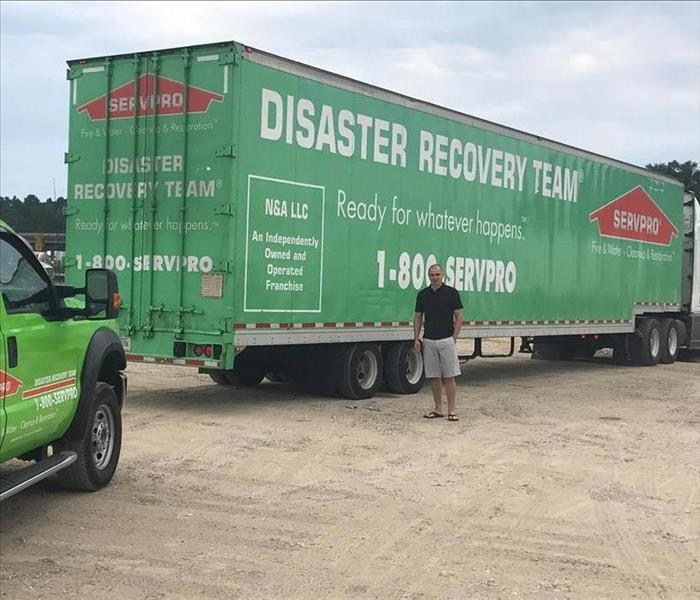 When it comes to water damage restoration, professional certification isn’t just a fancy title—it’s a sign of quality and reliability.
When it comes to water damage restoration, professional certification isn’t just a fancy title—it’s a sign of quality and reliability.
Dealing with water damage in your St. Petersburg, FL home can be overwhelming. Whether it’s from a burst pipe, a leaking roof, or a sudden storm, the aftermath often requires immediate and effective restoration. But not all restoration services are created equal. Choosing a company with professionally certified technicians can make a huge difference in how well your home is restored. In this blog, we’ll dive into why professional certification is so important in water damage restoration and how it benefits you.
The Value of IICRC Certification
When it comes to water damage restoration, the Institute of Inspection, Cleaning, and Restoration Certification (IICRC) set the industry standard. The IICRC is a well-respected organization that provides certification to ensure technicians are fully trained and knowledgeable. But what does this mean for you?
What IICRC Certification Means
Simply put, IICRC certification means that the technicians handling your water damage have been through rigorous training. They understand the ins and outs of water damage restoration—from assessing the damage to using the right equipment and techniques to dry out your home. They’re also trained to handle potential hazards like mold and contaminated water, ensuring that your home is not just dry but safe.
Why You Should Hire IICRC-Certified Professionals
There are several reasons why hiring IICRC-certified professionals is a smart move when dealing with water damage.
They Know Their Stuff
IICRC-certified technicians bring a wealth of knowledge to the table. They know how to deal with different types of water damage, whether it’s clean water from a broken pipe or contaminated water from a flood.
They Use the Right Tools
Water damage restoration isn’t just about mopping up water. It involves using specialized equipment like moisture meters, dehumidifiers, and air movers to ensure your home is thoroughly dried. IICRC-certified professionals know how to use these tools effectively, which means a better outcome for your home.
They Follow the Best Practices
Because they’re following IICRC standards, certified professionals ensure that every step of the process is done by the book. This means your home is dried, cleaned, and restored properly, reducing the risk of further damage or issues down the line.
The Risks of Choosing Non-Certified Technicians
On the flip side, hiring a company without IICRC certification can be risky. Here’s why.
You Could End Up Paying More
If the restoration isn’t done correctly, you could be dealing with lingering moisture, hidden mold, or even structural damage that wasn’t properly addressed. This can lead to more repairs—and more expenses—down the road.
You Might Not Get the Quality You Deserve
Without certification, there’s no guarantee that the technicians have the proper training or follow industry standards. This could result in subpar work that doesn’t fully address the damage, leaving your home at risk.
Why SERVPRO of Central St. Petersburg/Pinellas Park is the Right Choice
At SERVPRO®, we take certification seriously. Our team is IICRC-certified, meaning we have the training and experience to handle any water damage situation with expertise.
We Know St. Petersburg
With years of experience serving the local community, we understand the unique challenges that come with water damage in St. Petersburg. We’re committed to providing top-notch service to our neighbors.
We’re Here When You Need Us
Water damage doesn’t wait, and neither do we. Our team is ready to respond 24/7, ensuring that we’re there when you need us most. We use the latest equipment and follow the highest standards to get your home back to normal as quickly as possible.
Final Thoughts
When it comes to water damage restoration, professional certification isn’t just a fancy title—it’s a sign of quality and reliability. By choosing a company with IICRC-certified technicians, you’re ensuring that your home is restored the right way, minimizing the risk of further damage and giving you peace of mind.
If you’re dealing with water damage, don’t settle for anything less than the best. Contact SERVPRO of Central St. Petersburg/Pinellas Park for professional, certified water damage restoration services.
Be Prepared: Essential Emergency Response Planning for Storms in Florida
9/11/2024 (Permalink)
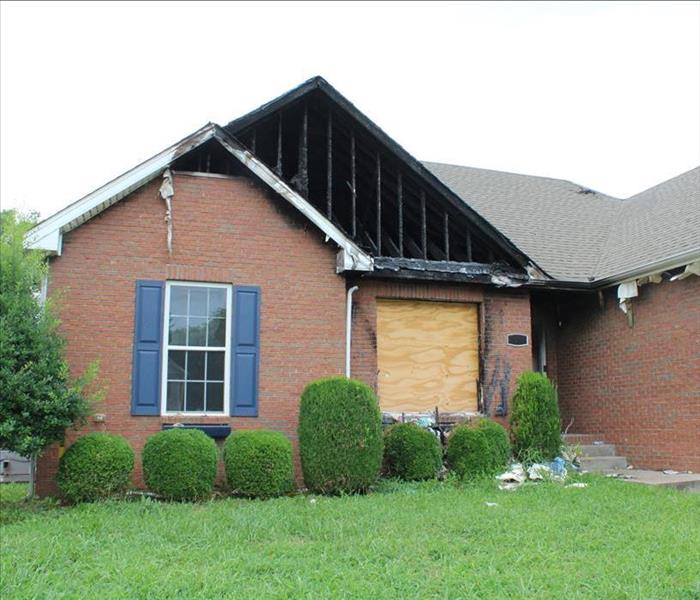 We discuss essential steps for emergency response planning and provide a relevant statistic about storm preparedness in Florida.
We discuss essential steps for emergency response planning and provide a relevant statistic about storm preparedness in Florida.
When it comes to severe weather, Florida is no stranger to powerful storms that can cause significant damage. Having a solid emergency response plan in place is crucial for protecting your property and ensuring the safety of your loved ones. In this blog, we'll discuss essential steps for emergency response planning, provide a relevant statistic about storm preparedness in Florida, and offer tips to make sure you're ready when the next storm hits.
Understanding the Importance of Storm Preparedness
Storms can strike with little warning, leaving a trail of destruction in their wake. According to the Florida Division of Emergency Management, nearly 70% of Floridians are aware of their vulnerability to hurricanes and other severe weather events, yet many still lack a comprehensive emergency plan.
Key Steps for Effective Emergency Response Planning
1. Develop a Family Emergency Plan
Start by creating a family emergency plan that outlines how you will communicate and where you will meet if separated during a storm. Make sure every family member knows their role and responsibilities. Include:
- Emergency contact information
- Designated meeting spots
- Evacuation routes
- Medical and special needs
2. Assemble an Emergency Kit
Prepare an emergency kit with essentials to last at least 72 hours. Your kit should include:
- Non-perishable food and water
- First aid supplies
- Flashlights and batteries
- Important documents (insurance policies, medical records)
- Medications and hygiene products
3. Protect Your Property
Take steps to secure your home and minimize damage:
- Install storm shutters or board up windows
- Reinforce doors and garage doors
- Trim trees and secure outdoor items
- Consider purchasing flood insurance
4. Stay Informed
Keep updated on weather conditions and emergency alerts by:
- Downloading weather apps
- Tuning into local news
- Signing up for community alert systems
5. Know Your Evacuation Zone
Familiarize yourself with local evacuation routes and zones. This knowledge can save crucial time when a storm is approaching.
The Role of Professional Help
In the aftermath of a storm, dealing with damage can be overwhelming. Companies like SERVPRO® are equipped to handle storm damage restoration efficiently and effectively. Their expertise can help restore your property to pre-storm conditions, providing peace of mind during stressful times.
Conclusion
Preparing for storms in Florida is not just a recommendation; it's a necessity. By developing a comprehensive emergency response plan, assembling an emergency kit, protecting your property, staying informed, and knowing your evacuation zone, you can significantly reduce the risks and impact of severe weather. Remember, the key to storm preparedness is proactive planning. Don't wait until it's too late – start preparing today to safeguard your future.
For more information on storm preparedness and restoration services, contact SERVPRO to ensure you're always ready for the unexpected.
Assessing and Restoring Fire-Damaged Plumbing Systems: A Comprehensive Guide
8/14/2024 (Permalink)
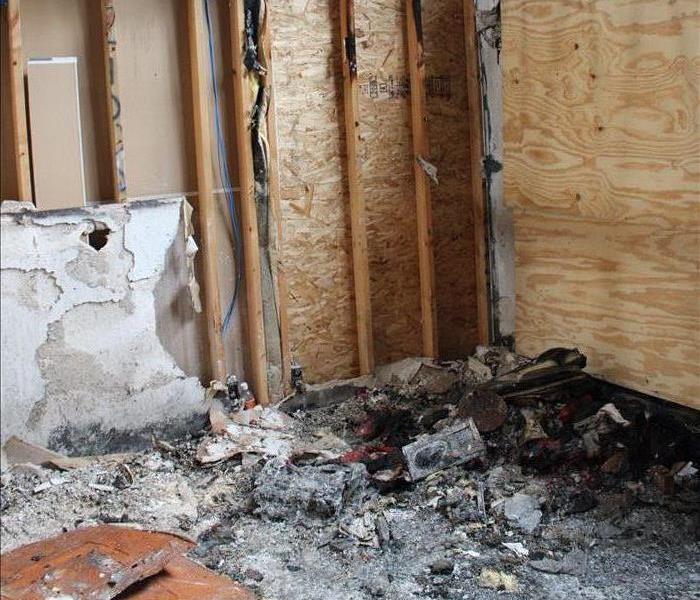 We’ll explore the importance of assessing and restoring fire-damaged plumbing systems and provide tips for effective restoration.
We’ll explore the importance of assessing and restoring fire-damaged plumbing systems and provide tips for effective restoration.
Fire damage to a property in St. Petersburg, FL often extends beyond visible destruction, affecting various systems within the structure, including plumbing. Addressing fire-damaged plumbing systems requires a thorough assessment and specialized restoration techniques to ensure the safety and functionality of your home or business. In this blog, we’ll explore the importance of assessing and restoring fire-damaged plumbing systems and provide tips for effective restoration.
The Impact of Fire on Plumbing Systems
Hidden Damage
Fire can cause hidden damage to plumbing systems. The intense heat can warp pipes, weaken joints, and cause leaks that may not be immediately apparent. Additionally, the materials used to extinguish the fire, such as water or chemicals, can introduce corrosion and other long-term issues.
Water Contamination
Fire damage can lead to water contamination in plumbing systems. Soot, debris, and chemicals from firefighting efforts can enter the water supply, posing health risks to occupants. Ensuring the water supply is safe and uncontaminated is a critical part of the restoration process.
Comprehensive Assessment of Fire-Damaged Plumbing
Professional Inspection
A professional inspection by certified experts, such as those from SERVPRO®, is essential for identifying the extent of damage to the plumbing system. Professionals use advanced tools like thermal imaging cameras and moisture meters to detect hidden issues and assess the overall condition of the plumbing infrastructure.
Identifying Specific Problems
During the assessment, professionals will look for specific problems such as warped or melted pipes, leaks, and compromised joints. They will also test water quality to check for contamination. Identifying these issues early ensures that they can be addressed effectively during the restoration process.
Restoring Fire-Damaged Plumbing Systems
Replacing Damaged Components
Restoration often involves replacing damaged components. This can include sections of pipes, fittings, and fixtures that have been compromised by the fire. Using high-quality, fire-resistant materials for replacements can enhance the durability and safety of the plumbing system.
Cleaning and Decontamination
Cleaning and decontaminating the plumbing system is crucial for removing any residual soot, chemicals, and debris. Professionals use specialized cleaning agents and techniques to ensure the water supply is safe and free from contaminants. This step is vital for preventing health risks associated with contaminated water.
Preventive Measures
After restoring the plumbing system, implementing preventive measures can protect against future damage. Installing fire-resistant materials, insulating pipes, and ensuring proper maintenance can help mitigate the risk of damage in case of another fire.
Benefits of Professional Restoration
Expertise and Experience
Certified professionals bring expertise and experience to the restoration process. They understand the complexities of fire-damaged plumbing systems and use specialized techniques to ensure thorough and effective restoration.
Comprehensive Service
Professional restoration services offer a comprehensive approach, addressing all aspects of damage from assessment to repair and preventive measures. This holistic approach ensures that your plumbing system is fully restored to its pre-fire condition and is safe for use.
Conclusion
Assessing and restoring fire-damaged plumbing systems is a critical part of the overall fire damage restoration process. By hiring certified professionals like SERVPRO, you can ensure that all hidden damage is identified, contaminants are removed, and your plumbing system is restored to its full functionality. Trust SERVPRO for expert fire damage restoration services that prioritize safety, efficiency, and quality. Contact us today to learn more about our comprehensive restoration solutions.
The Comprehensive SERVPRO Mold Remediation Process: A Step-by-Step Guide
7/10/2024 (Permalink)
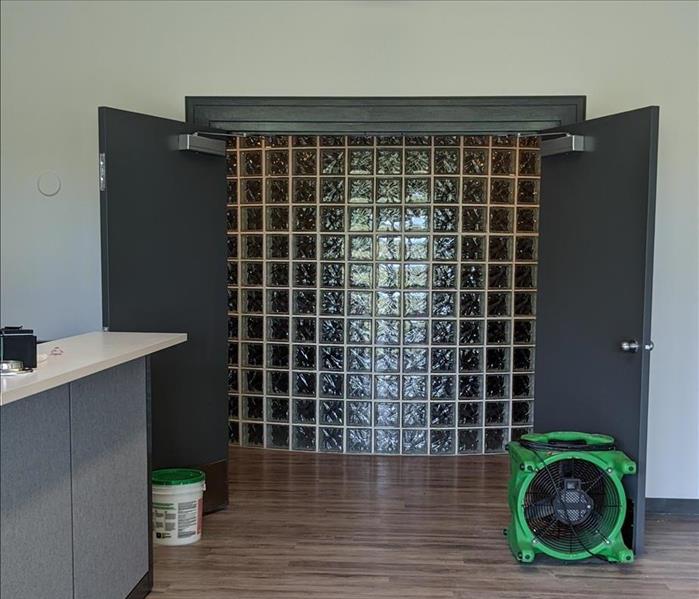 We take a closer look at the step-by-step mold remediation process employed by SERVPRO®.
We take a closer look at the step-by-step mold remediation process employed by SERVPRO®.
Mold growth can pose a significant threat to your property and indoor air quality. When faced with a mold problem, it's crucial to enlist the help of professionals who have the expertise and equipment to safely and effectively remediate the issue. In this blog post, we'll take a closer look at the step-by-step mold remediation process employed by SERVPRO®, a trusted leader in the restoration industry.
Initial Assessment and Inspection
The first step in the SERVPRO mold remediation process is a comprehensive assessment and inspection of the affected areas. Trained technicians will thoroughly inspect your property to identify the extent of mold growth, locate hidden mold, and assess any underlying moisture issues that may be contributing to mold growth.
Containment and Isolation
Once the assessment is complete, SERVPRO technicians will implement containment measures to prevent the spread of mold spores to unaffected areas of your home. Physical barriers, negative air pressure, and specialized equipment such as air scrubbers may be used to isolate the contaminated areas and minimize cross-contamination.
Mold Removal and Cleanup
The next step is the removal and cleanup of mold-contaminated materials and surfaces. SERVPRO technicians use industry-leading techniques and equipment to safely and effectively remove mold growth from affected areas. This may include HEPA vacuuming, damp wiping, and the use of antimicrobial treatments to inhibit mold regrowth.
Air Filtration and Purification
During the mold remediation process, SERVPRO utilizes high-efficiency particulate air (HEPA) filtration systems to capture airborne mold spores and other contaminants. Air scrubbers and negative air machines are employed to improve indoor air quality and remove mold particles from the air.
Drying and Dehumidification
Moisture control is essential for preventing mold regrowth. SERVPRO technicians employ advanced drying and dehumidification techniques to remove excess moisture from affected areas and restore optimal humidity levels. This may involve the use of industrial-grade air movers and dehumidifiers to accelerate the drying process.
Repair and Restoration
Once mold remediation is complete, SERVPRO technicians will assess any damage to building materials and belongings and initiate the repair and restoration process. This may involve repairing or replacing damaged drywall, flooring, insulation, and other structural components to restore your property to its pre-mold condition.
Post-Remediation Verification
After completing the remediation process, SERVPRO conducts a final inspection to ensure that mold growth has been effectively remediated and that the affected areas are safe for occupancy. This may involve testing air and surface samples to verify that mold levels have returned to normal.
The SERVPRO mold remediation process is a comprehensive and systematic approach to addressing mold issues in residential and commercial properties. By following a step-by-step protocol that includes assessment, containment, removal, cleanup, and restoration, SERVPRO technicians can effectively mitigate mold growth and restore your property to a safe and healthy condition. If you're dealing with a mold problem in your home or business, don't hesitate to contact SERVPRO for expert mold remediation services.
Defending Your Home Against Southeast Flash Floods: Prevention and Cleanup Strategies
5/16/2024 (Permalink)
Flash floods are a common occurrence in the Southeast, particularly during the region's rainy seasons and tropical storm events. These sudden and intense floods pose a significant threat to both life and property, causing damage that can be devastating. In this blog, we'll explore effective strategies for protecting your home from Southeast flash floods, focusing on prevention measures and cleanup efforts in the event of flooding.
Understanding Flash Floods
Flash floods are rapid and intense floods that occur with little warning, often as a result of heavy rainfall, dam or levee failure, or sudden snowmelt. In the Southeast, where the terrain is often characterized by steep slopes and impermeable surfaces, flash floods can occur suddenly and escalate rapidly, inundating homes and roads within minutes.
Prevention Measures
- Stay Informed: Keep track of weather forecasts and warnings issued by local authorities. Pay close attention to flash flood watches and warnings, and be prepared to take action if necessary.
- Elevate Electrical Systems: Elevate electrical outlets, switches, sockets, and circuit breakers at least one foot above the expected flood level to prevent water damage and reduce the risk of electrical hazards.
- Install Sump Pumps: Consider installing a sump pump in your basement or crawl space to remove excess water and prevent flooding during heavy rainfall or flash flood events.
- Maintain Gutters and Downspouts: Keep gutters and downspouts clear of debris to ensure proper drainage away from your home's foundation. Consider installing gutter extensions to direct water further away from your property.
- Seal Cracks and Openings: Seal any cracks or openings in your home's foundation, walls, and windows to prevent water intrusion during floods. Use waterproof sealants and materials to reinforce vulnerable areas.
Cleanup Efforts
- Ensure Safety: Before entering your home after a flood, ensure that it is safe to do so. Turn off electrical power and gas supplies to prevent electrical hazards and gas leaks. Wear protective gear, such as rubber boots and gloves, to minimize contact with contaminated flood water.
- Remove Water: Use pumps, wet-dry vacuums, and buckets to remove standing water from your home. Open windows and doors to promote ventilation and aid in the drying process.
- Dispose of Contaminated Materials: Dispose of any contaminated materials that cannot be salvaged, such as carpeting, insulation, and upholstered furniture. These materials may harbor mold and pose health risks if not properly cleaned or removed.
- Clean and Disinfect: Thoroughly clean and disinfect all surfaces, walls, and floors affected by flood water using a solution of bleach and water or a commercial disinfectant. This helps prevent mold growth and reduces the risk of microbial contamination.
- Dry Out Your Home: Use fans, dehumidifiers, and open windows to dry out your home thoroughly. Monitor humidity levels and continue drying until moisture levels are within a safe range to prevent mold growth and structural damage.
Flash floods are a serious threat to homes in the Southeast, but with proper preparation and swift action, you can minimize the risk of damage and ensure a faster recovery process. By implementing prevention measures and following effective cleanup strategies, you can protect your home from the devastating effects of flash floods. Remember, safety should always be the top priority during flood events, so take precautions and seek professional assistance from SERVPRO®.
Navigating the Spark: What to Do If You Experience Electrical Fires in Your Home
4/25/2024 (Permalink)
Electrical fires can strike unexpectedly, making it crucial for homeowners to know how to respond swiftly and effectively. In this blog, we'll explore the steps to take if you experience an electrical fire in your home, emphasizing safety, quick thinking, and the importance of preparedness.
Prioritize Safety
Your safety and the safety of your household members should always be the top priority. If the fire is small and you feel confident doing so, use a fire extinguisher specifically designed for electrical fires. However, if the fire is spreading rapidly or you're unsure, focus on evacuating everyone from the premises immediately.
In the event of a significant electrical fire, don't hesitate to evacuate the building. Ensure everyone is out safely and call emergency services immediately. Do not attempt to combat a large or spreading fire on your own.
Avoid Water
Water conducts electricity, and attempting to douse an electrical fire with water can lead to electrocution. Refrain from using water to extinguish the flames. Instead, rely on a Class C fire extinguisher designed for electrical fires.
If it's safe to do so, cut off the electrical power to the affected area. Locate the circuit breaker panel and turn off the relevant circuit. This step can help prevent the fire from escalating and reduce the risk of further electrical hazards.
Don't Use Improvised Solutions
Avoid using homemade or improvised methods to extinguish electrical fires. Stick to safety protocols and approved equipment to prevent the situation from worsening.
If there is smoke, stay low to the ground where the air is clearer. This is especially important when evacuating to minimize smoke inhalation.
Close Doors Behind You
As you exit the building, close doors behind you to slow down the spread of the fire. This can buy valuable time for emergency responders to arrive. Once you've evacuated the premises and called for help, wait for professional firefighters to handle the situation. Do not re-enter the building until authorities declare it safe to do so.
Develop and practice a fire escape plan with your household members. Ensure everyone knows the evacuation routes, meeting points, and emergency contact numbers. Regular drills can enhance preparedness.
Post-Fire Assessment
After the fire has been extinguished and the situation is under control, assess the damage. Consult with electricians and professionals to identify the cause of the electrical fire and address any safety concerns before restoring power.
Experiencing an electrical fire can be a harrowing experience, but a swift and safe response is crucial. Prioritize the safety of everyone in your home, evacuate promptly, and rely on professional firefighters to handle the situation. By following safety protocols, having a fire escape plan in place, and staying calm under pressure, you can navigate the challenges of an electrical fire with greater confidence and protect what matters most—your loved ones and your home. When in need of professional fire restoration emergency services, give SERVPRO® a call for your electrical fire emergency services.
The Power of Master Service Agreements: Fast Response and Strong Relationships
9/18/2023 (Permalink)
Do you have a super hero on speed dial?In the fast-paced world of business, rapid response is essential, especially during emergencies. Picture this: a national heatwave causes an abrupt A/C outage, with the potential to turn a hospital into an oven of stress and panic. In times like these, having a Master Service Agreement (MSA) in place can be the lifeline that transforms panic into a strategic, well-managed solution.
A Race Against Time
SERVPRO® Team Nicholson's Scott Askew and his crew proved the power of an MSA recently. Within hours of receiving the call, our team was on-site, ready to help. Seven hours later, cooling equipment was up and running - thanks to our subcontractor, Coastal Mechanical. We even had a team of welders fabricating quick hose connections in the hospital parking lot in order to connect the mobile chillers to the hospital's existing cooling system.
By the evening, the hospital was cooling to a comfortable temperature, all without displacing patients or disrupting critical operations. The team avoided an evacuation and multiple diversions, where a hospital has to transfer patients to another hospital. In the end, all this was possible without having to tell an MSA client, "no," — the word doesn't exist in our vocabulary anyways.
Building a Bridge to Swift Solutions
The MSA is more than just a contract - we become your logistics team, your trusted solutions provider. The last thing a business owner wants is to face a double emergency – the primary situation and its repercussions. Like the scramble to evacuate patients, and to secure specialized equipment, like chillers, at odd hours in order to prevent high temperatures from spoiling medication. An MSA eliminates the chaos, minimizing the complexity and severity of interruptions to business.
The Value of Strong Relationships
In the realm of crisis management, strong relationships are worth their weight in gold. Our connections with clients, subcontractor partnerships, and a network of SERVPRO teams across the nation, our bonds serve as the cornerstone of effective and efficient solutions. When challenges arise, leveraging our network's capabilities means clients have access to additional equipment and resources quickly.
In a world of emergencies, a Master Service Agreement isn't just a contract – it's a promise - to provide rapid response, leverage strong relationships, and transform potential chaos into smoothly managed solutions. It's the assurance that when a crisis arises, our team of professionals is ready to shift the perspective - becoming your total solutions provider for whatever happens.
Protecting What Matters: The Emergency Plan Every Parent Needs Before School Starts
8/8/2023 (Permalink)
 Protect what matters most. Have a back-to-school emergency plan.
Protect what matters most. Have a back-to-school emergency plan.
Do You Have a Back-to-School Family Emergency Plan?
No one likes to think that an emergency could happen to them, but the reality is that disaster can happen anytime, anywhere, including while your child is at school.Even if you never end up needing your family emergency plan, it's best to be prepared—just in case. Having a detailed plan in place will give you everyday peace of mind, and—in the event of an emergency—could save lives. Emergency Contacts
- List 1-3 trusted emergency contacts who can pick up your child from school if you are unable to do so.
- Confirm their availability and willingness to be emergency contacts.
- Teach your child how to contact each person by phone.
- Familiarize your child with each contact's appearance and vehicle.
Communicate with the School
- Keep school up-to-date with who is allowed to pick your child up.
- Provide correct contact information and identification for their records.
- Inquire about the school's policies for emergency situations and designated pick-up areas.
Alternative Drop-Off Locations
- Establish an alternative drop-off location in case emergency contacts cannot be reached promptly.
- This location could be a trusted friend or family member's house, or another secure spot.
- Familiarize your child with the alternate location's address and phone number to accurately guide authorities there.
Re-Evaluate Each YearAs your child ages, changes schools, or your family moves, it's smart to update your plan annually. Although we hope your family never experiences an unexpected disaster, if you do, SERVPRO® is available 24/7/365 for emergency service. Learn more here. Your family's safety and preparedness are paramount, and having a well-structured emergency plan is a crucial step in ensuring their protection.






 24/7 Emergency Service
24/7 Emergency Service




